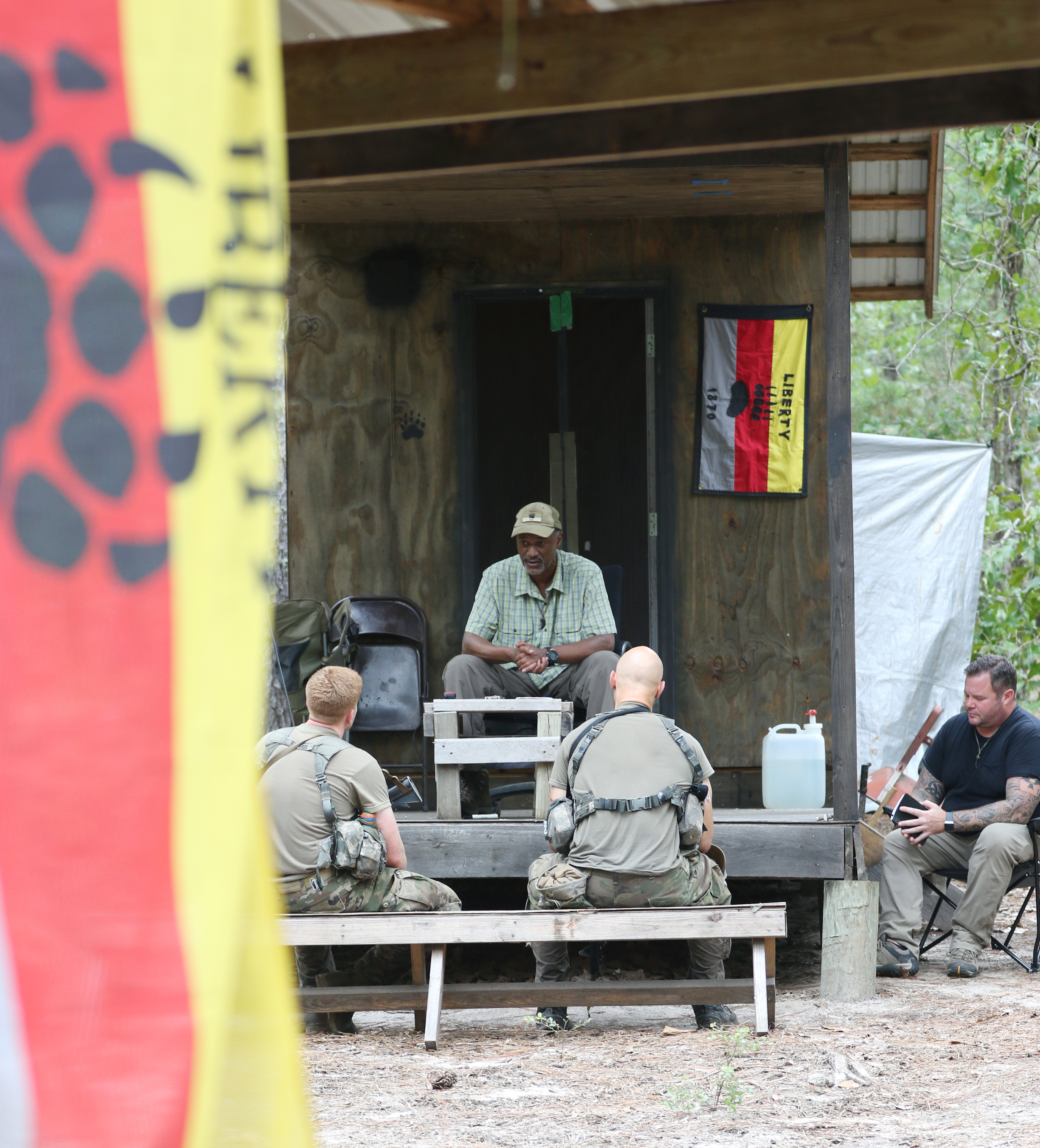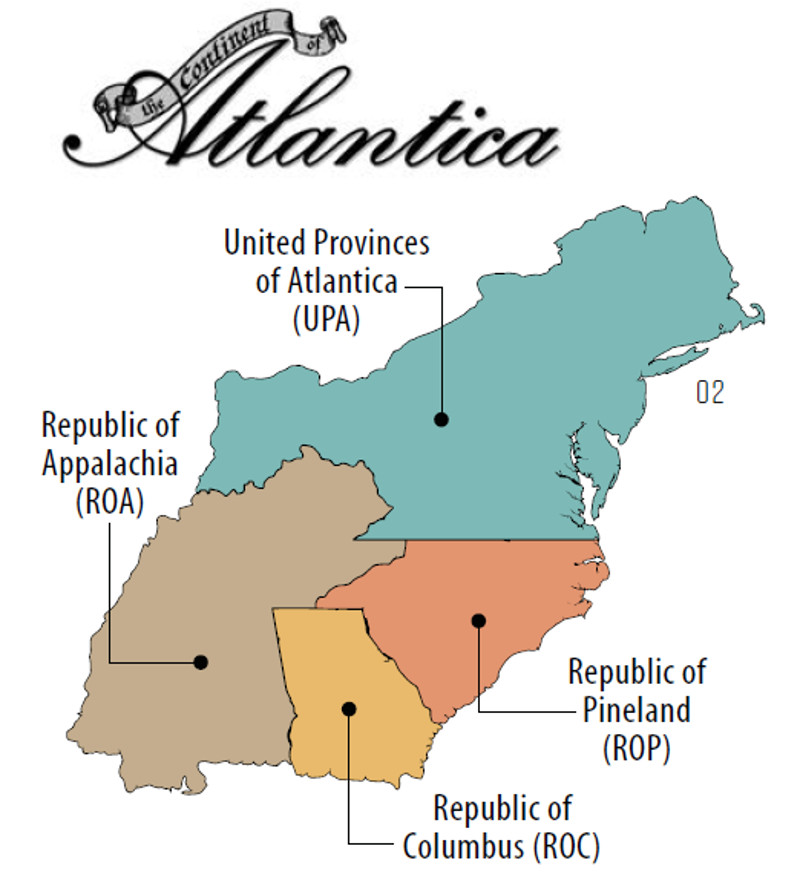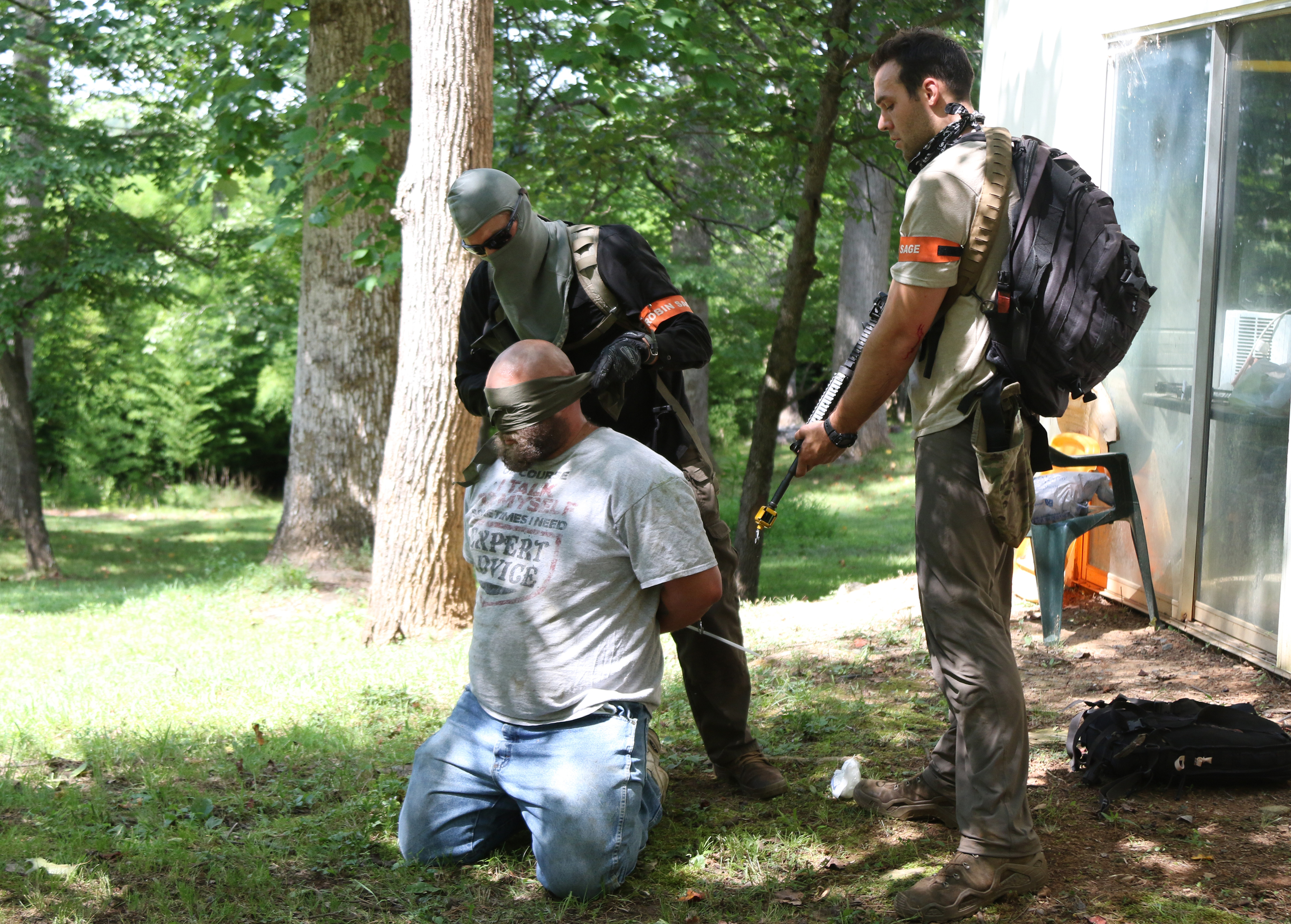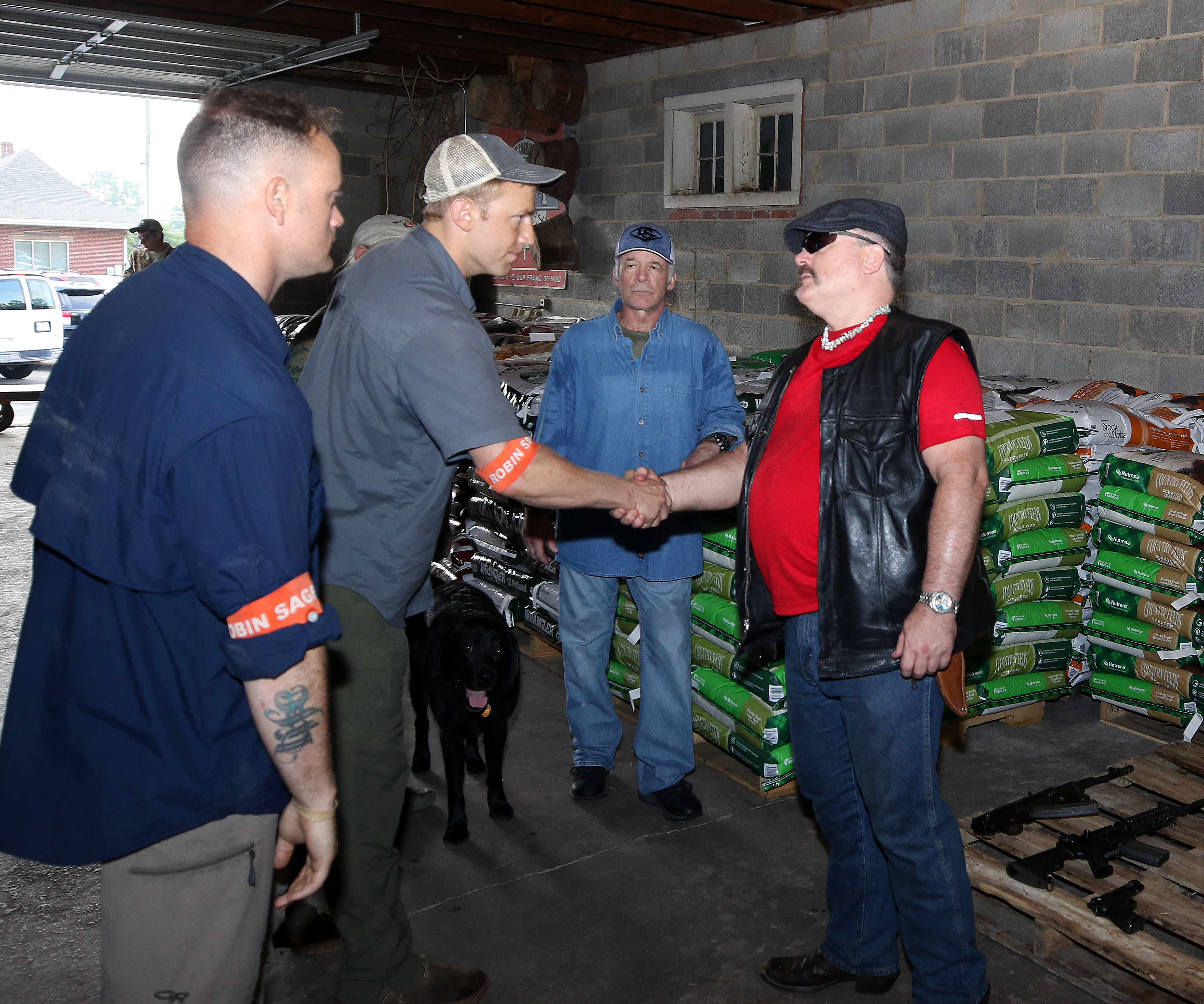The U.S. Army’s annual unconventional warfare exercise Robin Sage is set to kick off across rural North and South Carolina this month, pitting Special Forces candidates against simulated guerillas fighting for the fictional nation of “Pineland.” The exercise is so realistic and spans such a large area that the U.S. Army has issued notices to local law enforcement agencies warning them not to mistake the exercise for a real insurrection, an error that has cost one soldier his life during a previous Robin Sage event.
Robin Sage is conducted annually by the U.S. Army John F. Kennedy Special Warfare Center and School (SWCS) at Fort Bragg in North Carolina. This year’s Robin Sage will take place from January 22 to February 4 and will span across 25 counties in North Carolina and three counties in South Carolina. The exercise was first held in 1974 and is the culmination exercise (CULEX) — the final test in the U.S. Army’s Special Forces Qualification Course standing between candidates and their green berets. An Army release given to local outlets in NC and SC this week said that the exercise is designed to represent an “environment of political instability characterized by armed conflict, forcing Soldiers to analyze and solve problems to meet the challenges of this “real-world” training.”

Robin Sage tasks special forces candidates with applying a broad set of skills to unconventional warfare scenarios taking place in a highly complex environment. According to the Department of Defense, unconventional warfare, or UW, describes the use of military forces not to destroy or disable enemy forces outright, but instead to bolster or create resistance movements or insurgencies that can disrupt, or overthrow a government or occupying power. This is typically done by operating alongside or through guerrilla forces or clandestine assets in a hostile or contested area.
The types of operational environments the U.S. military has found itself in since 9/11 have been largely characterized by conflict between states and non-state actors such as terrorist or paramilitary groups. Many of the tactical and strategic options that would apply to a conventional war or large-scale conflict between peer state competitors do not apply to these types of conflicts. For that reason, SWCS uses Robin Sage to prepare Army special operators for unconventional warfare environments in which they are forced to call upon their training in small-unit tactics, negotiation skills, key leader engagements, and guerilla warfare.

While the Army does not disclose specifics about particular dates and locations of the various training events that make up Robin Sage, advance warning was given out to law enforcement agencies in order to prevent misidentification of exercise participants.
In a news release issued to nearby local outlets, SWCS said that residents may hear gunfire or see flares going off. The facility ensures residents that “controls are in place to ensure there is no risk to persons or property” and that the Army places safety first.

The exercise is designed to simulate a special forces-led guerilla campaign against the forces of the “United Provinces of Atlantica,” a fictional island off America’s eastern seaboard. Candidates embed themselves with mock guerillas fighting on behalf of the “Republic of Pineland,” a United States ally. Members of the 1st Batallion, 1st Special Warfare Training Group have even published a 157-page fictional “history” book that provides a worldbuilding backstory for the exercise, titled Atlantica: A Concise History.

One of the most unique features of Robin Sage is that the culmination exercise features civilian role-players. These volunteer actors range from “salaried independent contractors” to “middle-aged school children,” according to a 2016 article in Special Warfare, an official SWCS publication that calls these role-players the “heart of Robin Sage.” These civilian participants fulfill roles such as engaging in mock public protests, acting out simulated mass casualty events, or serving as simulated guerilla forces complete with their own leadership. Some civilians even allow the U.S. Army to use their private land, which accounts for the majority of the area on which the exercise takes place. The event even features its own fake currency for the Republic of Pineland featuring a pine tree.

One such civilian volunteer spoke to the North Carolina publication Our State in 2013, describing his role as a local guerilla leader, or “G-chief.” The volunteer, himself a former Special Forces operator, has played roles in which he leads bands of mock resistance fighters with whom Special Forces candidates have to negotiate or train.
Obviously, working alongside a large force of civilian volunteers in a simulated combat zone has the potential to be dangerous. The advance warnings given to law enforcement agencies have become critical to ensure safety following past incidents in which civilians and local law enforcement personnel have mistaken Robin Sage participants for actual terrorists or combatants.

In 2002, tragedy struck the exercise when two soldiers driving an unmarked vehicle and dressed in civilian clothing were pulled over by a sheriff’s deputy in rural Robbins, North Carolina. The two Green Beret candidates mistakenly thought the deputy was a participant in the exercise and brandished weapons in an attempt to disarm the officer. The sheriff’s deputy fired on the soldiers, killing one and wounding the other. “It’s clear that it was a breakdown in communications between the deputy sheriff and the soldiers involved,” a spokesman for the Army said at the time.

To help clear up the confusion that led to this incident, the Army now issues distinctive armbands and identifying hats to be worn by both roleplayers and special forces candidates at all times. All areas in which exercises take place and any vehicles used by participants are also supposed to be labeled clearly, too.
Even with the safety precautions and public messaging, there is still a large degree of misunderstanding and misinformation surrounding Robin Sage. Because the exercise simulates Special Forces candidates working with a local insurgency on American soil in order to overthrow an illegitimate government (the invading United Provinces of Atlantica), a number of conspiracy theories about Robin Sage have been put forward. Some critics claim the exercise breaks the Posse Comitatus Act signed into law in 1878 which bars federal military personnel from enforcing domestic policy within United States borders under most circumstances. Others argue that the exercise is a sign that the government or military is planning to declare martial law and/or occupy civilian areas. Similar concerns have been leveled at other exercises, such as Jade Helm 15 in 2015. The conspiracy theories about Jade Helm 15 got so out of hand that the White House had to address them during a press release, assuring Americans that their civil liberties and constitutional rights were not under attack.
The current political and security environment in the U.S. could magnify any conspiracy theories about Robin Sage and may lead to more confusion amongst local citizens. Still, it looks like the powers that be are doing whatever they can to educate authorities, those who may stumble upon exercise participants, and those taking part in the exercise itself, as to the risks.

Conspiracy theories aside, Robin Sage remains one of the premier military training exercises that prepare Army Special Forces units to take on some of the military’s most sensitive and outright challenging missions worldwide, including unconventional warfare, counterinsurgency, counterterrorism, and special reconnaissance operations. The culminating exercise that qualifies soldiers for their Green Berets would have to be equally unconventional in order to prepare Special Forces personnel for what they’ll encounter in real-world deployments.
Maj. Gen. James Linder, former Chief of Staff of U.S. Special Operations Command and Commanding General at SWCS, said that the types of real-world, unconventional warfare scenarios trained for at Robin Sage require Green Beret candidates to navigate the “human domain” and remain some of the most important lessons candidates will learn. “You re-live the scenarios and dilemmas in Robin Sage for as long as you wear that tab,” Linder told former participants in an undated after-action review. “It’s not always about the right and wrong answers. It’s about the consequences to the decisions you make. That’s Robin Sage.”
Contact the author: Brett@TheDrive.com
